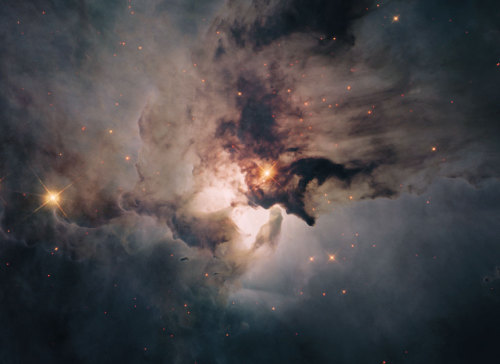Mission Juno
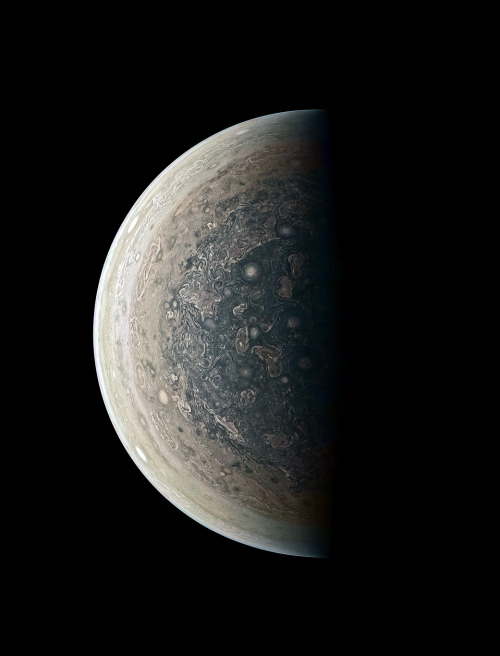
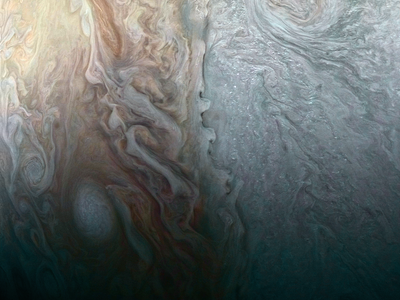



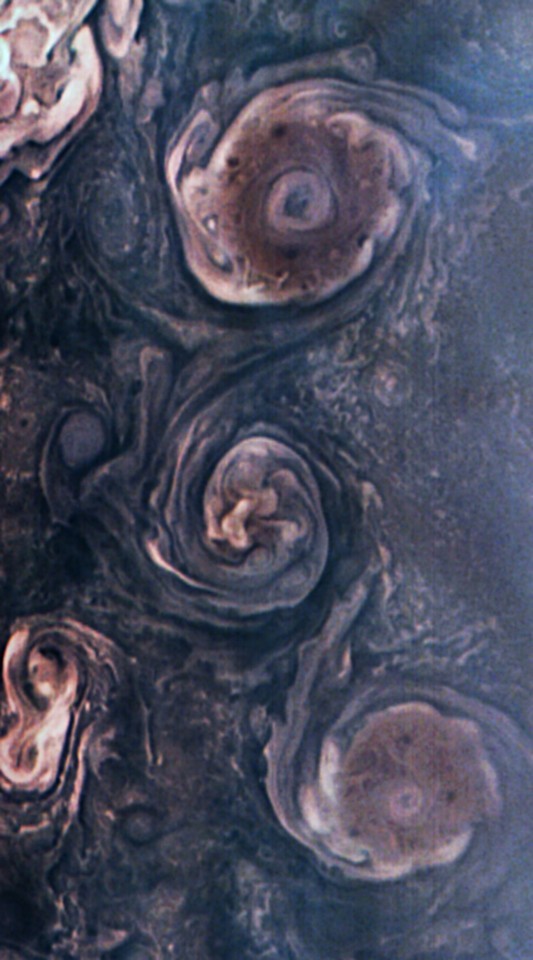



Images of Jupiter taken by JunoCam on NASA’s Juno spacecraft.

Mission Juno
Juno is a NASA spacecraft. It is exploring the planet Jupiter. Juno launched from Earth in 2011. It reached Jupiter in 2016. That was a five-year trip!
The name “Juno” comes from stories told by the Romans long ago. In the stories, Juno was the wife of Jupiter. Jupiter hid behind clouds so no one could see him causing trouble. But Juno could see through the clouds.
Juno has science tools to study Jupiter’s atmosphere. (The atmosphere is the layer of gases around a planet.) Juno will take the first pictures of Jupiter’s poles. The spacecraft will study the lights around Jupiter’s north and south poles, too.
Juno will help scientists understand how Jupiter was made. The spacecraft will help them learn how Jupiter has changed, too. The new discoveries can help us understand more about our solar system.
Sound of Jupiter’s Magnetosphere: Click here
Credit: NASA / JPL-Caltech / Mission Juno / Jason Major / Luca Fornaciari / Gerald Eichstädt
More Posts from Maevetheeuropan and Others

Kate Rubins’ Space Station Science Scrapbook
As a child, Kate Rubins dreamed of being an astronaut and a scientist. During the past four months aboard the International Space Station, that dream came full circle. She became the first person to sequence DNA in space, among other research during her recent mission, adding to her already impressive experience. She holds a doctorate in molecular biology, and previously led a lab of 14 researchers studying viruses, including Ebola.

Here’s a look back at Rubins in her element, conducting research aboard your orbiting laboratory.
Kate inside Destiny, the U.S. Laboratory Module
The U.S. national laboratory, called Destiny, is the primary research laboratory for U.S. payloads, supporting a wide range of experiments and studies contributing to health, safety, and quality of life for people all over the world.

Destiny houses the Microgravity Science Glovebox (MSG), in which Kate worked on the Heart Cells experiment.
Swabbing for Surface Samples
Microbes that can cause illness could present problems for current and future long duration space missions.

Understanding what microbe communities thrive in space habitats could help researchers design antimicrobial technology. Here, Kate is sampling various surfaces of the Kibo module for the Microbe-IV investigation.
Culturing Beating Heart Cells in Space
The Heart Cells investigation uses human skin cells that are induced to become stem cells, which can then differentiate into any type of cell.

Researchers forced the stem cells to grow into human heart cells, which Rubins cultured aboard the space station for one month.

Rubins described seeing the heart cells beat for the first time as “pretty amazing. First of all, there’s a few things that have made me gasp out loud up on board the [space] station. Seeing the planet was one of them, but I gotta say, getting these cells in focus and watching heart cells actually beat has been another pretty big one.”
Innovative Applied Research Experiment from Eli Lilly
The Hard to Wet Surfaces investigation from Eli Lilly, and sponsored by the Center for the Advancement of Science in Space (CASIS), looks at liquid-solid interactions and how certain pharmaceuticals dissolve, which may lead to more potent and effective medicines in space and on Earth.

Rubins set up vials into which she injected buffer solutions and then set up photography to track how tablets dissolved in the solution in microgravity.
Capturing Dragon
Rubins assisted in the capture of the SpaceX Dragon cargo spacecraft in July. The ninth SpaceX resupply mission delivered more than two thousand pounds of science to the space station.

Biological samples and additional research were returned on the Dragon spacecraft more than a month later.
Sliding Science Outside the Station
Science doesn’t just happen inside the space station. External Earth and space science hardware platforms are located at various places along the outside of the orbiting laboratory.

The Japanese Experiment Module airlock can be used to access the JEM Exposed Facility. Rubins installed the JEM ORU Transfer Interface (JOTI) on the JEM airlock sliding table used to install investigations on the exterior of the orbiting laboratory.
Installing Optical Diagnostic Instrument in the MSG
Rubins installed an optical diagnostic instrument in the Microgravity Science Glovebox (MSG) as part of the Selective Optical Diagnostics Instrument (SODI-DCMIX) investigation. Molecules in fluids and gases constantly move and collide.

When temperature differences cause that movement, called the Soret effect, scientists can track it by measuring changes in the temperature and movement of mass in the absence of gravity. Because the Soret effect occurs in underground oil reservoirs, the results of this investigation could help us better understand such reservoirs.
The Sequencing of DNA in Space
When Rubins’ expedition began, DNA had never been sequenced in space. Within just a few weeks, she and the Biomolecule Sequencer team had sequenced their one billionth “base” – the unit of DNA - aboard the orbiting laboratory.

The Biomolecule Sequencer investigation seeks to demonstrate that DNA sequencing in microgravity is possible, and adds to the suite of genomics capabilities aboard the space station.
Studying Fluidic Dynamics with SPHERES
The SPHERES-Slosh investigation examines the way liquids move inside containers in a microgravity environment. The phenomena and mechanics associated with such liquid movement are still not well understood and are very different than our common experiences with a cup of coffee on Earth.

Rockets deliver satellites to space using liquid fuels as a power source, and this investigation plans to improve our understanding of how propellants within rockets behave in order to increase the safety and efficiency of future vehicle designs. Rubins conducted a series of SPHERES-Slosh runs during her mission.
Retrieving Science Samples for Their Return to Earth
Precious science samples like blood, urine and saliva are collected from crew members throughout their missions aboard the orbiting laboratory.

They are stored in the Minus Eighty-Degree Laboratory Freezer for ISS (MELFI) until they are ready to return to Earth aboard a Soyuz or SpaceX Dragon vehicle.
Measuring Gene Expression of Biological Specimens in Space
Our WetLab-2 hardware system is bringing to the space station the technology to measure gene expression of biological specimens in space, and to transmit the results to researchers on Earth at the speed of light.

Rubins ran several WetLab-2 RNA SmartCycler sessions during her mission.
Studying the First Expandable Habitat Module on the Space Station
The Bigelow Expandable Activity Module (BEAM) is the first expandable habitat to be installed on the space station. It was expanded on May 28, 2016.

Expandable habitats are designed to take up less room on a spacecraft, but provide greater volume for living and working in space once expanded. Rubins conducted several evaluations inside BEAM, including air and surface sampling.
Better Breathing in Space and Back on Earth
Airway Monitoring, an investigation from ESA (the European Space Agency), uses the U.S. airlock as a hypobaric facility for performing science. Utilizing the U.S. airlock allows unique opportunities for the study of gravity, ambient pressure interactions, and their effect on the human body.

This investigation studies the occurrence and indicators of airway inflammation in crew members, using ultra-sensitive gas analyzers to evaluate exhaled air. This could not only help in spaceflight diagnostics, but that also hold applications on earth within diagnostics of similar conditions, for example monitoring of asthma.
Hot Science with Cool Flames
Fire behaves differently in space, where buoyant forces are removed. Studying combustion in microgravity can increase scientists’ fundamental understanding of the process, which could lead to improvement of fire detection and suppression systems in space and on Earth.

Many combustion experiments are performed in the Combustion Integration Rack (CIR) aboard the space station. Rubins replaced two Multi-user Droplet Combustion Apparatus (MDCA) Igniter Tips as part of the CIR igniter replacement operations.
Though Rubins is back on Earth, science aboard the space station continues, and innovative investigations that seek to benefit humans on Earth and further our exploration of the solar system are ongoing. Follow @ISS_Research to keep up with the science happening aboard your orbiting laboratory.
Make sure to follow us on Tumblr for your regular dose of space: http://nasa.tumblr.com

lol sometimes science publications are like 20 pages of gibberish. It feels like an alien language I’m learning slowly as I stare at the pages…
—___—


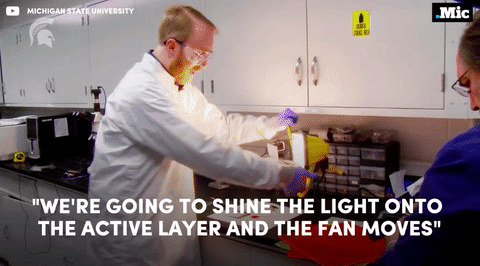

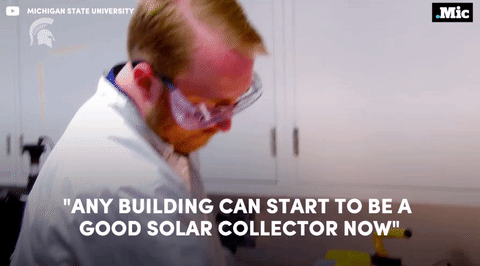
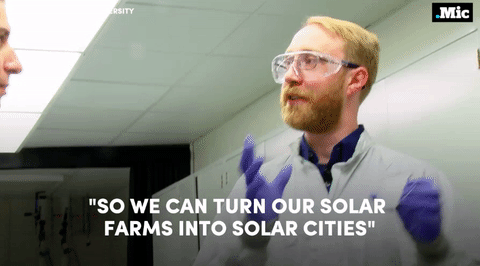




this is a massive step forward for renewable energy (x) | follow @the-future-now


POTENTIAL HABITATS FOR EARLY LIFE ON MARS
Recently discovered evidence of carbonates beneath the surface of Mars points to a warmer and wetter environment in that planet’s past. The presence of liquid water could have fostered the emergence of life.
A new study by James Wray at the Georgia Institute of Technology and Janice Bishop of the SETI Institute, as well as other collaborators, has found evidence for widespread buried deposits of iron- and calcium-rich Martian carbonates, which suggests a wetter past for the Red Planet.
“Identification of these ancient carbonates and clays on Mars represents a window into history when the climate on Mars was very different from the cold and dry desert of today,” notes Bishop.
The fate of water on Mars has been energetically debated by scientists because the planet is currently dry and cold, in contrast to the widespread fluvial features that etch much of its surface. Scientists believe that if water did once flow on the surface of Mars, the planet’s bedrock should be full of carbonates and clays, which would be evidence that Mars once hosted habitable environments with liquid water. Researchers have struggled to find physical evidence for carbonate-rich bedrock, which may have formed when carbon dioxide in the planet’s early atmosphere was trapped in ancient surface waters. They have focused their search on Mars’ Huygens basin.
This feature is an ideal site to investigate carbonates because multiple impact craters and troughs have exposed ancient, subsurface materials where carbonates can be detected across a broad region. And according to study led James Wray, “outcrops in the 450-km wide Huygens basin contain both clay minerals and iron- or calcium-rich carbonate-bearing rocks.”
The study has highlighted evidence of carbonate-bearing rocks in multiple sites across Mars, including Lucaya crater, where carbonates and clays 3.8 billion years old were buried by as much as 5 km of lava and caprock.
The researchers, supported by the SETI Institute’s NASA Astrobiology Institute (NAI) team, identified carbonates on the planet using data from the Compact Reconnaissance Imaging Spectrometer for Mars (CRISM), which is on the Mars Reconnaissance Orbiter. This instrument collects the spectral fingerprints of carbonates and other minerals through vibrational transitions of the molecules in their crystal structure that produce infrared emission. The team paired CRISM data with images from the High Resolution Imaging Science Experiment (HiRISE) and Context Camera (CTX) on the orbiter, as well as the Mars Orbiter Laser Altimeter (MOLA) on the Mars Global Surveyor, to gain insights into the geologic features associated with carbonate-bearing rocks.
The extent of the global distribution of martian carbonates is not yet fully resolved and the early climate on the Red Planet is still subject of debate. However, this study is a forward step in understanding the potential habitability of ancient Mars.
Preview of paper: http://onlinelibrary.wiley.com/doi/10.1002/2015JE004972/abstract
TOP IMAGE….Ancient layered clay-bearing bedrock (top left) and carbonate bedrock (bottom right) are exposed in the central uplift of an unnamed crater approximately 42 kilometers in diameter in eastern Hesperia Planum, Mars. The image was taken by the High Resolution Imaging Science Experiment (HiRISE) instrument aboard the Mars Reconnaissance Orbiter. Credit: NASA/JPL/University of Arizona
LOWER IMAGE….Aeolian bed forms overlie ancient layered, ridged carbonate-rich outcrop exposed in the central pit of Lucaya crater, northwest Huygens basin, Mars. The image was taken by the High Resolution Imaging Science Experiment (HiRISE) instrument aboard the Mars Reconnaissance Orbiter. Credit: NASA/JPL/University of Arizona



ExoMars Orbiter’s First Images
(Image credit: ESA/Roscosmos/ExoMars/CaSSIS/UniBE)

New Hubble Portrait of Mars (which will be at its closest to us on 30 May)
On May 12, 2016, the Hubble Space Telescope captured this vivid photo of Mars, when the planet was closer to Earth than usual and approaching the opposition (when the sun and Mars will be on exact opposite sides of Earth). Mars is especially photogenic during opposition because it can be seen fully illuminated by the sun as viewed from Earth. Mars will reach opposition on May 22.
Furthermore, the closest approach to Earth for the year will occur on 30 May, when Mars will be at a distance of 75.28 million km (46.78 million miles) from us. For comparison, the average distance between the two is 225 million km. These two events so close together make the coming week(s) the best time to observe the red planet with a telescope. You can already notice it in the night sky (check for your location) as one of the brightest dots with a red-orange glow near the Moon.
Read about the Hubble’s image here.
Image credits: NASA, ESA, the Hubble Heritage Team (STScI/AURA), J. Bell (ASU), and M. Wolff (Space Science Institute)
Morning on Mars
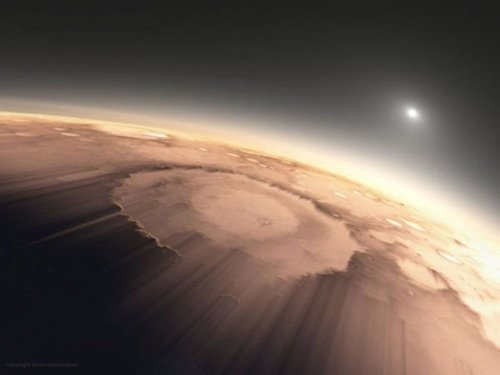
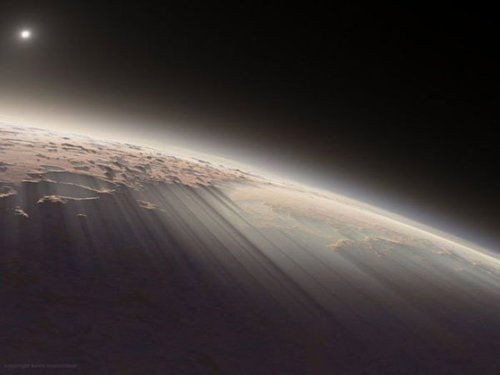
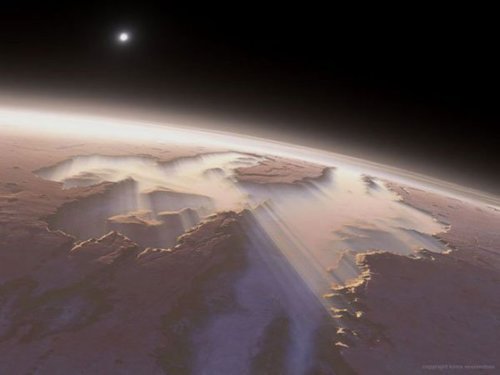


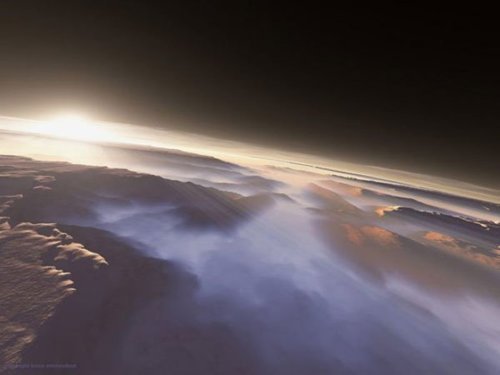
6 Martian sunrises, as seen by the HiRISE orbiter. Once again, not artist’s renditions.
-
 buddahman liked this · 2 months ago
buddahman liked this · 2 months ago -
 charliesian reblogged this · 3 months ago
charliesian reblogged this · 3 months ago -
 eveeyehorizons liked this · 4 months ago
eveeyehorizons liked this · 4 months ago -
 shotofstress reblogged this · 6 months ago
shotofstress reblogged this · 6 months ago -
 thatmoirevibration reblogged this · 10 months ago
thatmoirevibration reblogged this · 10 months ago -
 hellonursevenus reblogged this · 10 months ago
hellonursevenus reblogged this · 10 months ago -
 hellonursevenus liked this · 10 months ago
hellonursevenus liked this · 10 months ago -
 varginhamonologues reblogged this · 1 year ago
varginhamonologues reblogged this · 1 year ago -
 vicissitudeislove liked this · 1 year ago
vicissitudeislove liked this · 1 year ago -
 bigbzworld liked this · 1 year ago
bigbzworld liked this · 1 year ago -
 fall-and-shadows liked this · 1 year ago
fall-and-shadows liked this · 1 year ago -
 varginhamonologues liked this · 1 year ago
varginhamonologues liked this · 1 year ago -
 vermilionvexation liked this · 1 year ago
vermilionvexation liked this · 1 year ago -
 a-grief-observed reblogged this · 1 year ago
a-grief-observed reblogged this · 1 year ago -
 deadlysunlight reblogged this · 1 year ago
deadlysunlight reblogged this · 1 year ago -
 diotermotice liked this · 1 year ago
diotermotice liked this · 1 year ago -
 mypixelstories liked this · 1 year ago
mypixelstories liked this · 1 year ago -
 umbra-life reblogged this · 1 year ago
umbra-life reblogged this · 1 year ago -
 buypithetin liked this · 1 year ago
buypithetin liked this · 1 year ago -
 5150juanfer reblogged this · 1 year ago
5150juanfer reblogged this · 1 year ago -
 theshadowline liked this · 1 year ago
theshadowline liked this · 1 year ago -
 aroundtheseparts liked this · 2 years ago
aroundtheseparts liked this · 2 years ago -
 daddyslilhorror reblogged this · 2 years ago
daddyslilhorror reblogged this · 2 years ago -
 2880cjk liked this · 2 years ago
2880cjk liked this · 2 years ago -
 joecare4 liked this · 2 years ago
joecare4 liked this · 2 years ago -
 all11is11one reblogged this · 2 years ago
all11is11one reblogged this · 2 years ago -
 umbra-life reblogged this · 2 years ago
umbra-life reblogged this · 2 years ago
